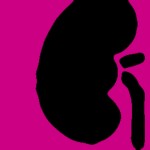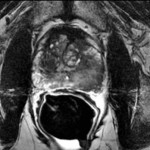Article of the week: Calcium : citrate ratio may predict severe lithogenesis
Every week the Editor-in-Chief selects the Article of the Week from the current issue of BJUI. The abstract is reproduced below and you can click on the button to read the full article, which is freely available to all readers for at least 30 days from the time of this post.
In addition to the article itself, there is an accompanying editorial written by a prominent member of the urological community. This blog is intended to provoke comment and discussion and we invite you to use the comment tools at the bottom of each post to join the conversation.
Finally, the third post under the Article of the Week heading on the homepage will consist of additional material or media. This week we feature a video of Miguel Angel Arrabal-Polo discussing his paper.
If you only have time to read one article this week, it should be this one.
Importance of citrate and the calcium : citrate ratio in patients with calcium renal lithiasis and severe lithogenesis
Miguel Angel Arrabal-Polo*, Miguel Arrabal-Martin*, Salvador Arias-Santiago**†, Juan Garrido-Gomez‡, Antonio PoyatosAndujar§ and Armando Zuluaga-Gomez**
Department of Urology, San Cecilio University Hospital, **Department of Medicine, Baza Hospital, †Department of Medicine, University of Granada, and ‡Departments of Traumatology and §Biochemistry, San Cecilio University Hospital, Granada, Spain
OBJECTIVE
• To analyse the importance of urinary citrate and the urinary calcium : citrate ratio in patients with calcium renal lithiasis and severe lithogenesis compared with a control group of patients without lithiasis.
MATERIAL AND METHODS
• A cross-sectional study of 115 patients in eastern Andalusia, Spain was conducted.
• The patients were divided into two groups: Group A: 56 patients aged 25 – 60 years without calcium renal lithiasis; Group B: 59 patients aged 25 – 60 years, presenting with calcium renal lithiasis and severe lithogenesis.
• The citrate levels and the calcium : citrate ratio in the patients’ urine and the relationship of these two factors to lithiasic activity were analysed and compared.
RESULTS
• In Group B, 32.2% of the patients presented with hypocitraturia, compared with 14.3% of the patients in Group A (P = 0.02).
• The urinary citrate levels were lower in Group B than in Group A (P = 0.001) and the calcium : citrate ratio was higher in Group B than in Group A (P = 0.005).
• The results suggest that a patient urinary calcium : citrate ratio > 0.25 indicates severe lithogenesis (with a sensitivity of 89% and a specifi city of 57%).
• After linear regression analysis, we found that the urinary citrate level is an independent factor associated with the changes in bone densitometry T-score values of patients.
CONCLUSIONS
• The patients with severe lithogenesis presented with hypocitraturia, which was associated with lower bone mineral density.
• The calcium : citrate ratio, which is linearly related to the bone resorption marker β-crosslaps, could be useful in evaluating the risk of severe lithogenesis when this ratio is > 0.25.



